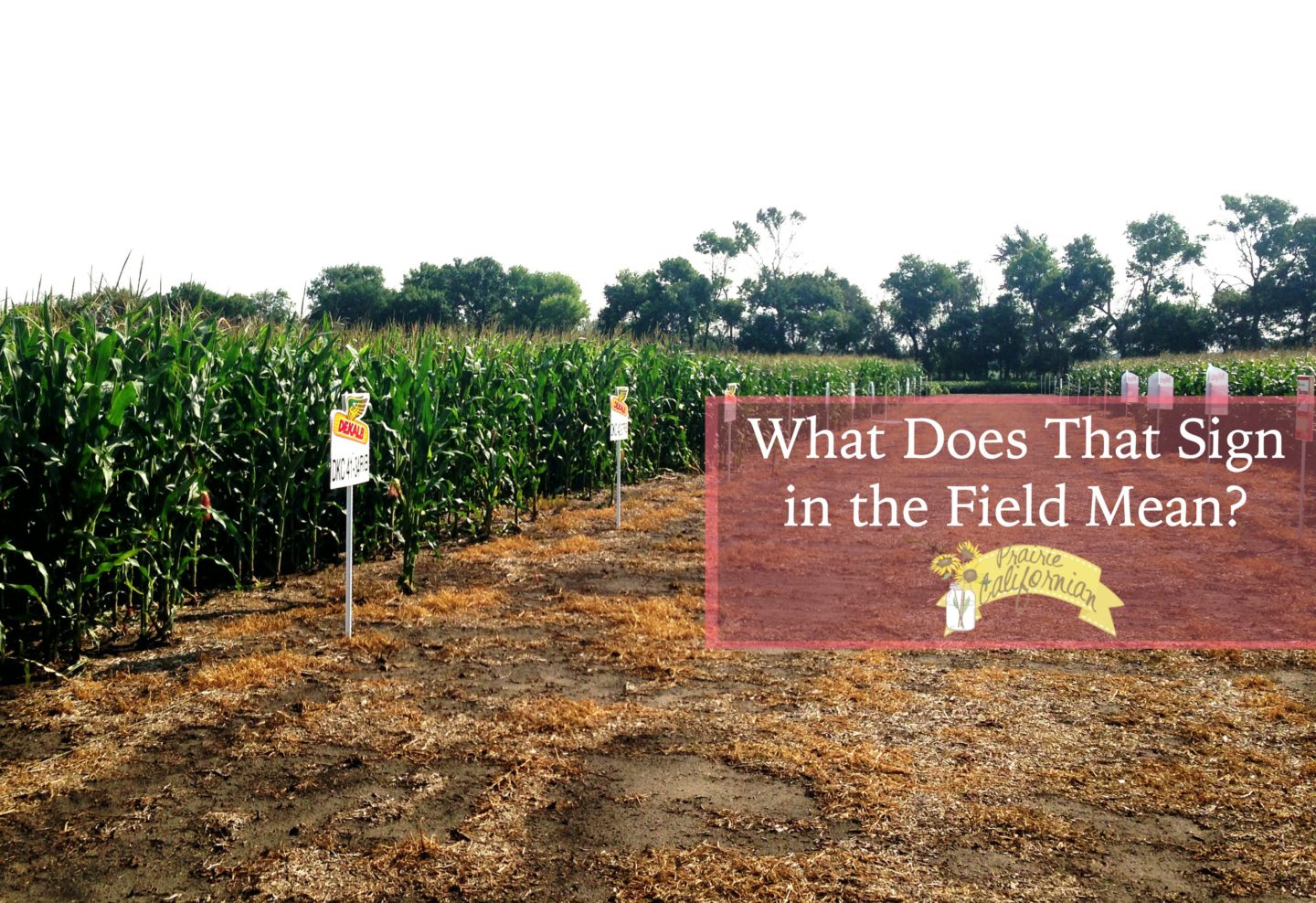
I don’t really recall this happening much in California when I lived there, but since moving to the Midwest, there comes a time of the year when all of a sudden all these signs show up on the outside of fields. They often look something like this…
So what does that sign in the field mean?
First, let’s talk about how to read the sign. A crop sign usually tells you three different pieces of information.
1. The Seed Company: Basically who researched/bred/distributed the seed planted. It could be an independent seed retailer or it could be part of a larger company like Monsanto or Dow. It is important to know the company who created the seed because if you are interested in planting that variety, you will need to know where to find it.
In this example, Peterson Farms Seed is the seed company. They are a regional independent seed retailer.
2. The Seed Variety: Farmers have LOTS of choices when it comes to the seeds they plant. Even under one particular company there may be several different varieties of seed all for the same crop. Different seed companies specify their varieties differently, most of the time though it is made up of some combination of letters and numbers. Think of it like when purchasing lipstick, there are many different colors of lipstick you can buy but they all are the same brand or even type. And much like seed and lipstick, it doesn’t mean much to those outside of the industry. But let someone familiar with the industry see this sign, they will know exactly what it means.
In this particular example, the seed variety is 75K85, the VT2 Pro is explaining the fact that this variety of corn has two traits bred into it to protect the plant from insects like earworms which can devastate a corn crop and significantly reduce yields.
3. The Seed Dealer: Seed sales usually involves some sort of local dealer. For example, my husband is partner in a business that sells seeds. We are what is known as a dealer. We order in seed from different seed companies and provide our local farmers with the seeds they are interested in planting. A seed dealer sort of works like your local grocery store. They stock the products their customers are looking to purchase. And much like a grocery store, sometimes they can be individually owned and operated or sometimes they can be a part of a larger corporation with many local stores.
In this example. Maverick Ag is the seed dealer which is also my day job. 😉
So why put the signs in the field?
There are two reasons we put up signs in the field.
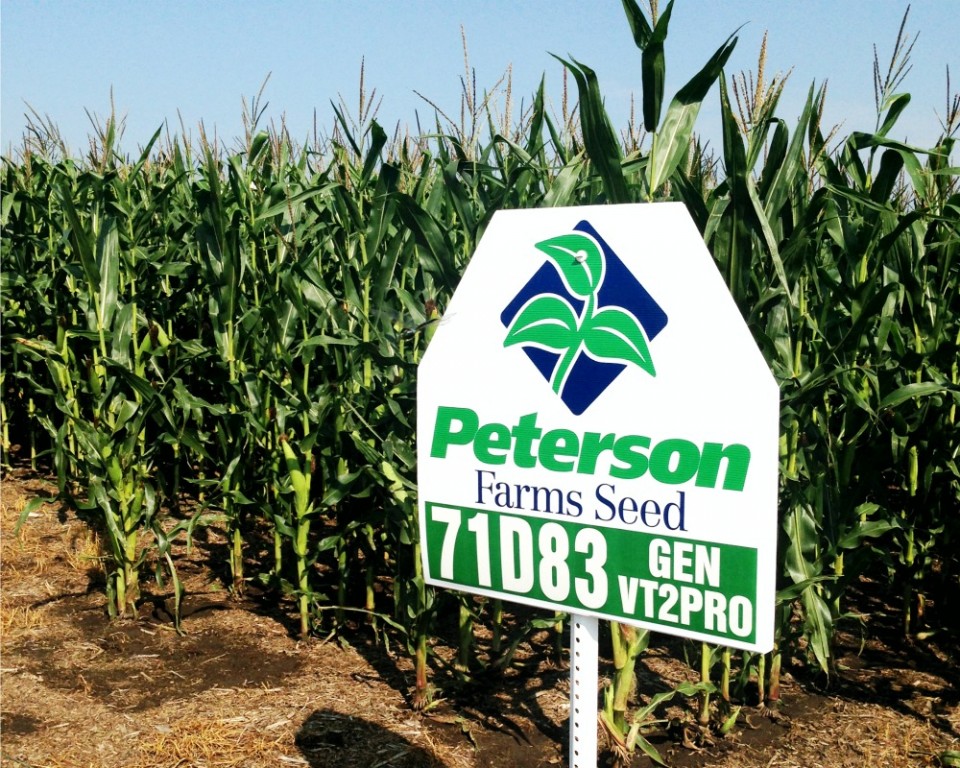 1. To mark a farmer’s variety of seed planted in their field: When farmers drive around, they are constantly looking at crops. Let’s say there happens to be a variety of corn that is doing very well in a field down the street from you. Without having to ask the farmer what variety of seed he/she planted in the field, a crop sign gives this information. Same with a crop that didn’t do so hot. This allows farmers the chance to find new varieties that they may want to plant in their own fields or avoid varieties that they don’t feel will fare well in their own soils.
1. To mark a farmer’s variety of seed planted in their field: When farmers drive around, they are constantly looking at crops. Let’s say there happens to be a variety of corn that is doing very well in a field down the street from you. Without having to ask the farmer what variety of seed he/she planted in the field, a crop sign gives this information. Same with a crop that didn’t do so hot. This allows farmers the chance to find new varieties that they may want to plant in their own fields or avoid varieties that they don’t feel will fare well in their own soils.
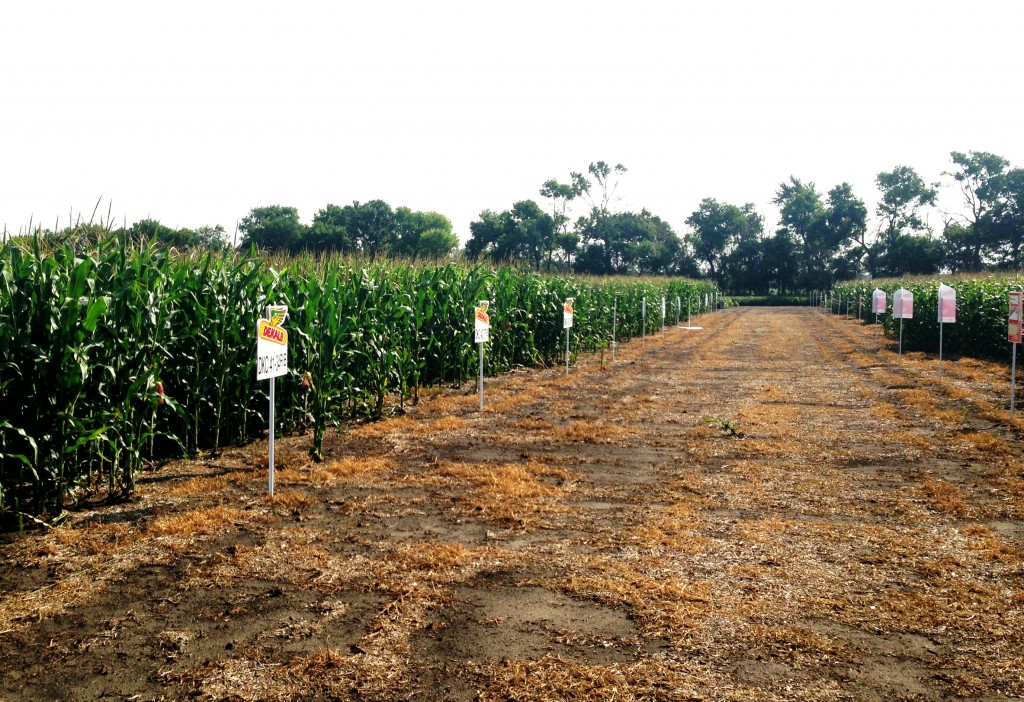 2. To mark a plot of many planted varieties: At Seed Companies and Seed Dealers, we typically do something called planting a plot. A plot is several rows of many different varieties of seed all planted in one particular area. As Dealers, we usually plan several different companies’ seeds in one plot. In the fall before the crops are harvested, we host what we call a plot tour. What this does is allow farmers in the area the opportunity to see how each variety did. And just like the first option, it gives farmers the opportunity to find new varieties they may want to try or sometimes avoid. It also helps us as a seed dealer see which varieties of seeds best suit our area so that we can make the best possible recommendations for our local farmers.
2. To mark a plot of many planted varieties: At Seed Companies and Seed Dealers, we typically do something called planting a plot. A plot is several rows of many different varieties of seed all planted in one particular area. As Dealers, we usually plan several different companies’ seeds in one plot. In the fall before the crops are harvested, we host what we call a plot tour. What this does is allow farmers in the area the opportunity to see how each variety did. And just like the first option, it gives farmers the opportunity to find new varieties they may want to try or sometimes avoid. It also helps us as a seed dealer see which varieties of seeds best suit our area so that we can make the best possible recommendations for our local farmers.
Above is a photo of our corn plot this year at Maverick Ag. We plant plots for corn, soybeans, and sunflowers so that we can see how each variety does.
So there you have it. Next time you see a sign like this in the field, you will be able to know three pieces of information about the crop growing in the field!
How many of you knew this? Didn’t know? Have you seen signs like this before?

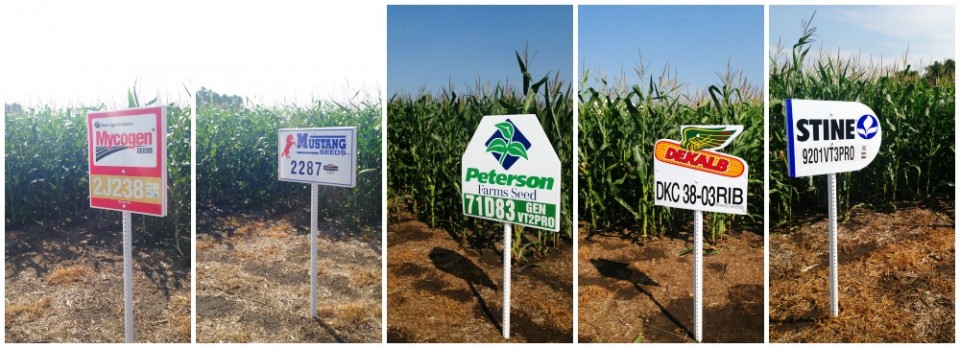
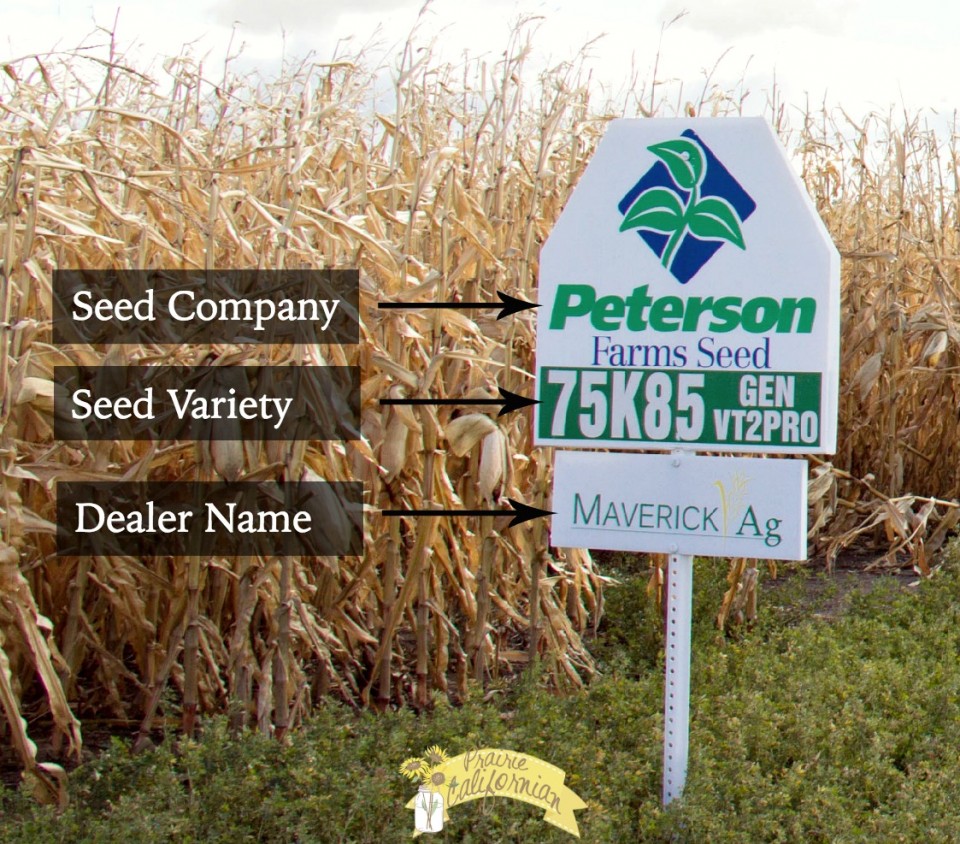
Nice explanation, Jenny. A few years a study was done in Illinois. Half the people in the study believed these signs designated what corporation owned the farm land. That someone would think that would never occur to me because these signs have been part of my life for my entire life. Just goes to show why we need to engage the non-farm members of our community.
Author
Interesting! I will have to look this up!
Well done! Farmers are ALWAYS snooping…I mean, checking!…other crops and I’m glad you addressed this as I had NO idea the general public didn’t know what these signs are and some very negative things have been said about them lately.
Thanks for the info, notice some of these on my commute to work. Helpful information. 🙂
I had never even considered that folks don’t know what these signs are. Another good reason for you to continue blogging and for more farmers to tell their stories. Lots of misinformation floating around the universe.
Ohhhh I miss these signs. Sure, there are farms in Texas but in our area (North Central, Dallas/Fort Worth) it’s mostly cattle ranches. Growing up in Kentucky, I saw these signs all the time. I’ve been to a fair amount of ‘field days’ too, hosted by seed companies and dealers to promote and showcase the seed varieties available. I always know I’m close to HOME when I start seeing seed plots and signs in the field. Ohhhh how I miss.
Funny story and I’ll shut up…. My dad’s sweet corn is a variety called G90. It’s bi-color that most “city people” know as Peaches-n-Cream. They get so excited when the corn is ready and they tell their friends about “Greg’s Peaches-n-Cream Patch.” All the while he’s quietly muttering under his breath, “It’s not Peaches-N-Cream, it’s G90.” I sure wish I had some Greg’s G90 corn, I’d eat some breakfast, brunch, lunch, slupper (the snack between lunch and supper), supper, and a snack before bed!!!!!!!!!
Planting so close, how can you avoid cross- pollination? It seems the few rows next to a few rows would be something new and not deliverable.